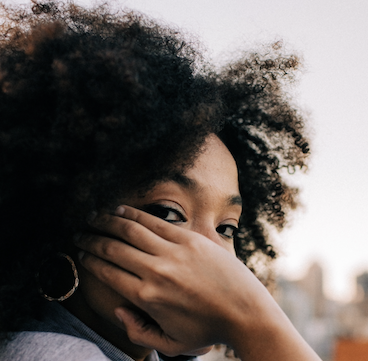Essential Oils for Natural Hair, The Ultimate Guide to Fall Hair Care
Fall hair care? The summer months can be both a blessing and a challenge for natural hair beauties.
Warm weather and increased humidity often mean less dryness and breakage.
However, the intense heat, sun exposure, and outdoor activities can leave natural hair parched, stressed, and in need of TLC.
As cooler temperatures approach, it’s the perfect time to transition your hair care routine. Essential oils to nurture, nourish, and replenish both your hair and scalp.
Essential oils have been used for centuries to promote healthy hair growth, restore moisture, and treat various scalp issues. For natural hair, they offer an excellent way to fortify your hair’s health. This is particularly true as you move from the summer heat to the cooler, drier months of fall.
Here’s How You Can Use These Oils to Get Your Hair Ready for the Change in Season.
1. Nurture Your Scalp and Retain Moisture
One of the first places to focus your attention when transitioning into cooler weather is your scalp. A healthy scalp is the foundation for healthy natural hair. The changing temperatures can sometimes leave it dry, itchy, or irritated. Essential oils are an excellent way to address scalp concerns while promoting overall hair growth.
Here Are Four Essential Oils For Scalp and Hair Growth
Lavender Oil:
Known for its calming and soothing properties, lavender oil is a go-to for scalp care. It’s particularly beneficial if your scalp has experienced any irritation from the summer sun. Lavender oil has been shown to promote hair growth by increasing circulation to the scalp and calming any inflammation. Plus, its natural scent offers an aromatherapy bonus, helping you unwind after a long day.
Tea Tree Oil:
Tea tree oil is a powerful antifungal and antibacterial essential oil that helps to treat various scalp conditions, such as dandruff or dryness, which can worsen as the air becomes cooler. It unclogs hair follicles, promotes healthy hair growth, and soothes the scalp, making it an excellent oil to incorporate into your routine as you transition into fall.
Peppermint Oil:
Cooling and invigorating, peppermint oil is a great way to refresh your scalp after the long, hot days of summer. It stimulates blood circulation to the scalp, which helps promote hair growth while also preventing dryness and flakiness. The cooling sensation also provides a bit of relief from any irritation or sunburn your scalp may have experienced over the summer months.
Rosemary Oil:
For those looking to promote thicker, fuller hair, rosemary oil is an excellent choice. Known for enhancing scalp circulation, rosemary oil can help stimulate hair follicles, resulting in healthier, thicker hair. It’s particularly useful if your hair has thinned out due to summer shedding or heat damage.
2. Moisturize and Replenish Dry, Sun-Damaged Hair for Fall Hair Care
Summer heat, UV exposure, and time spent in chlorinated pools or salty ocean water can leave your natural hair feeling dry and brittle. As fall approaches, it’s important to replenish lost moisture and prepare your hair for the cooler, drier months ahead. Carrier oils can play a crucial role in deeply moisturizing and nourishing your strands when using essential oils.
Here Are Three Carrier Oils to Consider for Fall Hair Care:
Argan Oil:
Often referred to as “liquid gold,” argan oil is packed with vitamin E and essential fatty acids. Argan oil is known to deeply moisturize and repair dry, sun-damaged hair. It restores shine and softness while also protecting your hair from environmental damage. As fall sets in, incorporating argan oil into your routine will help your hair maintain its moisture and shine despite the drier air.
Jojoba Oil:
Jojoba oil is another excellent choice for moisturizing natural hair. Its structure closely resembles the oil that your scalp naturally produces. This means it helps regulate moisture without clogging pores or weighing your hair down. Jojoba oil is perfect for keeping your hair moisturized throughout the changing weather. It’s known to lock in moisture without leaving your hair feeling greasy.
Coconut Oil:
A staple in many natural hair routines, coconut oil is excellent for deep conditioning. It penetrates the hair shaft, repairing damage from within while also protecting your hair from the cooler, drier air. Coconut oil helps to restore the protein lost due to sun exposure, leaving your hair feeling stronger, smoother, and more manageable.
3. Repair and Strengthen Hair Damaged by Summer Heat
After enduring the summer heat, your hair may be in need of some serious repair and strengthening. Essential oils can help repair damaged strands, reduce breakage, and fortify your hair as you move into the cooler months.
Ylang Ylang Oil:
Ylang ylang oil is known for its natural conditioning properties, making it ideal for repairing weak or damaged hair. It promotes the production of natural oils in your scalp, which helps moisturize and nourish dry, brittle hair. This essential oil is particularly helpful in reducing hair breakage, making it a great choice for transitioning out of the summer months when your hair might be more vulnerable to damage.
Cedarwood Oil:
Cedarwood oil is known for its ability to balance oil production in your scalp, which can prevent hair thinning and breakage. It strengthens hair follicles, making it less prone to breakage while also promoting hair growth. This oil is ideal for those looking to repair damage from heat styling, sun exposure, or summer shedding.
How to Incorporate Essential Oils into Your Routine for Fall Hair Care
Now that you know which essential oils to use, here are a few ways to incorporate them into your fall hair care routine:
Hot Oil Treatments
Hot oil treatments are an excellent way to deeply nourish both your hair and scalp. You can mix your favorite essential oils with a carrier oil, warm the mixture by placing it in a hot water bath. Massage it into your scalp and hair. Leave the oil on for 20 to 30 minutes before rinsing and shampooing. This treatment will help restore moisture, repair damage, and promote healthy hair growth.
Leave-in Mist
A leave-in mist is a great way to keep your hair moisturized throughout the day. You can create your own by mixing a few drops of essential oil (like lavender or rosemary) with water in a spray bottle. Spritz this onto your hair whenever it needs a moisture boost, or use it as a refreshing leave-in conditioner.
Scalp Massages
Regular scalp massages with essential oils like rosemary, peppermint, or tea tree oil can stimulate blood flow to the scalp, promoting hair growth and helping to alleviate any dryness or flakiness. Simply mix a few drops of essential oil with a carrier oil and gently massage your scalp for a few minutes.
Summing Things Up …
As you transition from summer to fall, incorporating essential oils into your natural hair care routine can help nurture your scalp, moisturize dry strands, and repair any damage caused by the summer heat.
Essential oils like lavender, tea tree, rosemary, along with carrier oils like argan, jojoba, and coconut oil offer a wide range of benefits. From promoting hair growth to restoring lost moisture and strengthening your hair, you’re sure to find a solution for your natural hair.
By consistently using these oils in treatments like hot oil therapies, scalp massages, and leave-in mists, you’ll prepare your natural hair for the cooler temperatures while keeping it nourished, healthy, and resilient year-round.
To learn more about essential oils for natural hair, click here!
That’s it for this week. As always …
Dedicated to Your Beauty,
Juliette Samuel,
Esthetician, Author, Publisher,
The post Essential Oils for Natural Hair, The Ultimate Guide to Fall Hair Care appeared first on Black Skin Care – Natural Hair Care – African American Skin Care.


